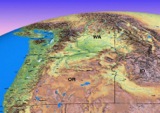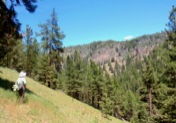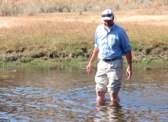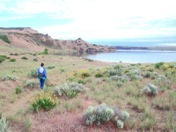Less Traveled Northwest
Day Hikes for the Adventurous
Remote Day Hiking in the Inland Northwest
What Geographic Areas are Covered?
Our focus is the desert and forest lands of Eastern Oregon and Eastern Washington, as these are least-visited parts of the Northwest, with the largest swaths of public land. We exclude any hikes within an hour’s drive of a large inland population center, such as Spokane, Boise or Bend. These areas already get plenty of use and attention!
How Difficult are These Hikes?
Most are moderate to easy day hikes, with no overnight camping on the trail. They are suitable for any reasonably fit adult or teenager who will enjoy hiking two or three hours in the morning, having an hour or so to relax and eat lunch, then hiking a couple of hours back to the trailhead.
Few of these hikes are overly strenuous. If the terrain is steep or the trail is poor, the hike is usually a short one (four or five miles roundtrip). If the terrain is more gentle or the trail is good, the hike is generally longer (six or seven miles roundtrip). Nearly always, if you are out on the trail at 9 AM, you can be back at your vehicle by 3 PM.
Our hike difficulty ratings are:
• Easy………………Hike is mostly on an established trail or road track or is cross-
country over terrain that is easily negotiated.
• Moderate…..…Hike may include some challenging sections, such as rough
terrain, stream fords, bushwhacking or a steep hillside scramble.
• Difficult…………Hike has significant challenges throughout its length, including
bushwhacking, boulder-hopping, steep terrain and/or elevation changes.
Which Season of the Year is Best?
In the high desert and mountainous regions of the Inland Northwest (with elevations generally over 4,000’), day hiking is best enjoyed between June 1 and September 31. Though campgrounds on public lands normally open in May, this is rarely a good month to be day hiking. You’re likely to encounter unpredictably cold and wet weather, muddy roads and trails, plus streams still swollen with spring runoff. Best to wait until June.
June, July and August are usually ideal, with late afternoon thunderstorms the only caution. September is also a great month for day hiking, though bow hunters are often out in force, especially on weekends. October marks the start of rifle hunting season, as well as the cold and wet weather again, so it is not a great time to be on the trail.
The one exception is the Columbia Basin of Southeast Washington (with elevations generally below 2,000’). Spring comes early to this region and day hikes are best enjoyed in April, May and June, then later in September after the hot summer has passed.
For the special challenges presented by desert day hiking, see our Desert Hiking Tips.
Are Permits Required to Day Hike on Public Lands?
It depends on the public agency that manages the land on which you're hiking.
For the BLM, which manages almost 30% of all public land in Oregon and Washington, primarily in the eastern, desert portion of these states, permits are generally not required for personal recreation use (hiking, camping or parking) on any BLM land.
For the USFS, which manages nearly 50% of Oregon and Washington's public land, all in forested mountain areas of the region, a Northwest Forest Pass is required to park at some of the hiking trailheads. Since it's not always clear which trailheads require a pass and which do not, to be safe it's easiest to just purchase this pass and keep it on your dashboard when hiking on USFS lands. The cost of an annual pass is $30.00 (or $5.00 per day per vehicle) and it's good for any USFS trailhead in Oregon and Washington.
Another option for federal lands is an interagency pass, the America the Beautiful Pass. This pass covers all federal fee sites managed by the National Park Service, Fish and Wildlife Service, Bureau of Reclamation, as well as the BLM and USFS. The Annual Interagency Pass costs $80.00, though those over age 62 can purchase a $10.00 Lifetime Senior Pass and those with permanent disabilities can receive a free Lifetime Access Pass.
Finally, in 2011, Washington State introduced a recreational use fee for state public lands. The Discover Pass is required to park and recreate on lands managed by Washington's Department of Fish and Wildlife (WDFW), Department of Natural Resources (DNR) and the State Parks and Recreation Commission. This Discover Pass costs $30.00 for an annual pass or $10.00 for a one-day pass.
Can an Entire Vacation be Spent on These Day Hikes?
It’s possible, but not advisable — you’d spend too many days moving your camp and driving between hike locations. We suggest including these hikes as just one of several activities in a given location. Once settled at a remote camp, enjoy the day hikes there, but also take advantage of the other recreation opportunities nearby: fishing, bird watching, or just reading and relaxing. After a few days, move your camp to the next remote location and enjoy the day hikes and activities found there.
Page last updated: 11/10/13





